Key Concepts in the Steel Industry?
Key Concepts in the Steel Industry?
Key Concepts in the Steel Industry Introduction
Key Concepts in the Steel Industry provides a solid foundation for comprehending its processes, products, and applications. The steel industry is a crucial pillar of modern society, providing the foundation for construction, transportation, manufacturing, and countless other sectors. Understanding the key concepts in this dynamic industry is essential for individuals looking to explore its intricacies and applications. In this article, we will take an in-depth look at the fundamental terms and concepts that form the basis of the steel industry. Whether you are a professional or simply curious about steel, this comprehensive guide will provide valuable insights into its production, properties, and diverse range of uses.
Raw Materials and Steel Production
Steel is primarily produced from iron ore, which serves as the primary raw material. The process of transforming iron ore into steel involves several stages, including mining, ore beneficiation, and ironmaking. These processes, along with the use of other materials such as coal and limestone, contribute to the creation of steel with desired properties and characteristics. Understanding the importance of raw materials and their influence on steel production is fundamental to comprehending the steel industry as a whole.
Steel Grades and Alloying Elements
Steel comes in various grades, each designed to meet specific requirements and applications. The concept of steel grades encompasses factors such as chemical composition, mechanical properties, and intended use. Alloying elements play a crucial role in determining the properties of different steel grades. Elements like carbon, manganese, chromium, and nickel are added in varying amounts to achieve desired characteristics such as strength, corrosion resistance, and heat resistance. Exploring the significance of steel grades and alloying elements is vital in understanding the wide range of steel products available in the market.
Steelmaking Processes
The production of steel involves different methods and techniques, each with its own advantages and applications. Two primary steelmaking processes are widely used: the blast furnace method and the electric arc furnace method. The blast furnace method is the traditional approach, primarily used for large-scale production, while the electric arc furnace method offers flexibility and efficiency for smaller-scale operations. Understanding the principles, advantages, and limitations of these processes is crucial in comprehending the diverse landscape of steel production.
Steel Products and Applications
Steel is an incredibly versatile material, finding applications in numerous industries and sectors. From construction and infrastructure to automotive and manufacturing, steel plays a pivotal role in shaping our modern world. Structural steel, stainless steel, and specialty steels are just a few examples of the broad range of steel products available, each designed to meet specific requirements. Exploring the various applications of steel provides insight into its unrivaled strength, durability, and adaptability.
Quality Control, Standards, and Certifications
Maintaining quality control in the steel industry is paramount to ensuring the reliability and performance of steel products. Rigorous testing methods, inspections, and adherence to international standards play a vital role in upholding quality standards. Certifications such as ISO 9001 and EN standards demonstrate a commitment to excellence and instill confidence in customers. Understanding the importance of quality control and certifications in the steel industry enhances trust and reliability.
Conclusion
By familiarizing yourself with the key concepts in the steel industry, you gain a deeper appreciation for this essential sector. From the production processes to the diverse range of applications, steel continues to shape our world. The fundamental understanding of raw materials, steel grades, production processes, applications, and quality control sets the stage for further exploration and engagement in the ever-evolving steel industry.

